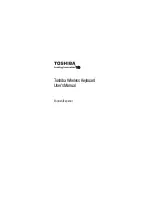
Voice Mode
MOTIF-RACK XS Owner’s Manual
73
Basic Structure
V
oice
Multi
Utility
Ref
erence
The Contr
ols &
Connector
s
Setting Up
Listening to
the Sound
Connections
Using a Computer
Quic
k Guide
Appendix
Element Edit
If you wish to edit the sounds that make up a Voice and the detailed parameters that determine the sound, such as Oscillator,
Pitch, Filter, Amplitude, and EG (Envelope Generator), use the MOTIF-RACK XS Editor to edit the parameters of the individual
Elements. These parameters can be edited only on the MOTIF-RACK XS Editor, and not the device itself. For details on each
parameter setting window, refer to the MOTIF-RACK XS Editor Owner’s Manual.
OSC (Oscillator)
Element Switch 1 – 8
Determines whether each Element is on or off. When this is set to off, the corresponding Elements
will not sound.
Settings:
off (inactive), on (active)
Wave Bank
Category
Number
Name
Determines the Waveform assigned to the Element. Preset Banks are available for the Waveform
Bank. For details about Preset Waveforms, see the Waveform list in the separate Data List.
XA Control
(Expanded Articulation Control)
Expanded Articulation (XA) is a special feature of the MOTIF-RACK XS that provides greater
performance flexibility and realism. This parameter determines how the XA feature of the Element
works. Try setting this parameter referring to the five types of XA Control described in the Basic
Structure on page 51. You can obtain the desired sound and expressive control depending on your
performance articulation by assigning the same Element Group to those Elements having the same
type of XA Control.
Settings:
normal, legato, key off sound, wave cycle, wave random, all AF off, AF 1 on, AF 2 on
normal
When this is selected, the Element will sound normally each time a Note On message is received.
legato
When this is selected and the Mono mode is selected, an alternate Element (different from the one used when XA Control is
set to “normal”) will be played when you play an external keyboard in legato fashion (playing the next note of a single-note
line or melody before releasing the previous note).
key off sound
When this is selected, the Element will sound each time a Note Off message is received.
wave cycle
When this is selected for multiple Elements, each Element sounds alternately according to its numerical order each time a
Note On message is received. (In other words, receiving the first Note On message will sound Element 1, the second Note
On message Element 2, and so on.)
wave random
When this is selected for multiple Elements, each Element will sound randomly each time a Note On message is received.
all AF off
When this is selected, the Element will sound when both of the A, Func [1] and [2] buttons (ASSIGNABLE FUNCTION
buttons) are turned off.
AF 1 on
When this is selected, the Element will sound when the A. Func [1] button (ASSIGNABLE FUNCTION [1] button) is turned on.
AF 2 on
When this is selected, the Element will sound when the A. Func [2] button (ASSIGNABLE FUNCTION [2] button) is turned on.
Elm Group
(Element Group)
Determines the XA Control group so that the Elements of the same group are called up in order or
randomly. Assign the same group number to the Elements having the same type of XA Control. The
setting here is not available when the XA Control parameters of all Elements are set to “normal.”
Settings:
1 – 8
Key on Delay
Determines the time (delay) between the moment that a Note On message is received and the point
at which the sound is played. The higher the value, the longer the delay time.
Settings:
0 – 127
Tempo Sync
(Delay Tempo Sync)
Determines whether or not the Key On Delay parameter is synchronized to the tempo of the
Arpeggio.
Settings:
off (not synchronized), on (synchronized)
Tempo
(Delay Tempo)
Determines the timing of the Key On Delay only when Tempo Sync is set to “on.”
Settings:
16th, 8th/3 (eighth-note triplets), 16th. (dotted sixteenth notes), 8th, 4th/3 (quarter-note triplets), 8th. (dotted
eighth notes), 4th (quarter notes), 2nd/3 (half-note triplets), 4th. (dotted quarter notes), 2nd (half notes), whole/3
(whole-note triplets), 2nd. (dotted half notes), 4th x 4 (quarter-note quadruplets; four quarter notes to the beat),
4th x 5 (quarter-note quintuplets; five quarter notes to the beat), 4th x 6 (quarter-note sextuplets; six quarter notes
to the beat), 4th x 7 (quarter-note septuplets; seven quarter notes to the beat), 4th x 8 (quarter-note octuplets;
eight quarter notes to the beat)
Vel Cross Fade
(Velocity Cross Fade)
This determines how gradually the sound of an Element decreases in volume in proportion to the
distance of velocity changes outside the Velocity Limit setting. A setting of 0 produces no sound
outside the Velocity Limit. The higher the value, the more gradual the level decreases. The practical
application of this parameter is to create natural-sounding velocity cross fades, in which different
Elements (Waveforms) change gradually depending on how strongly or softly you play.
Settings:
0 – 127
















































